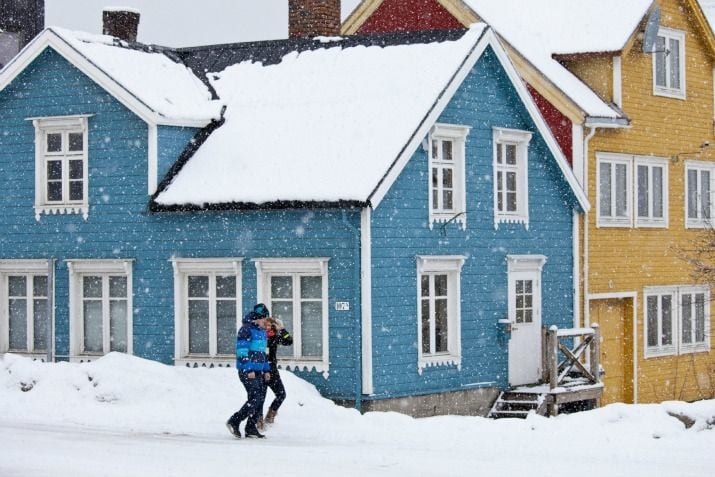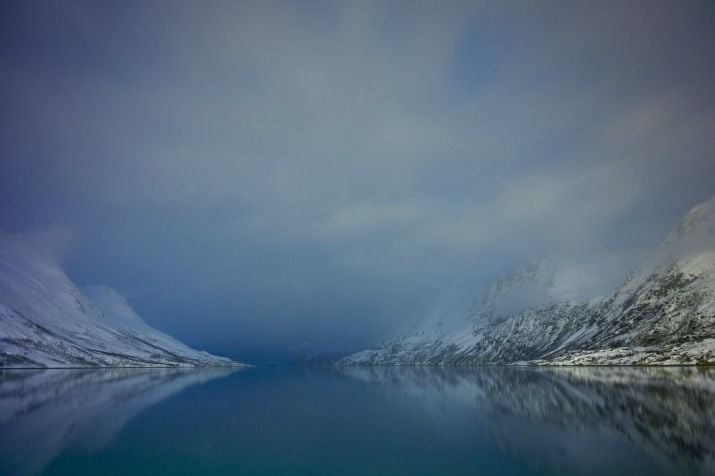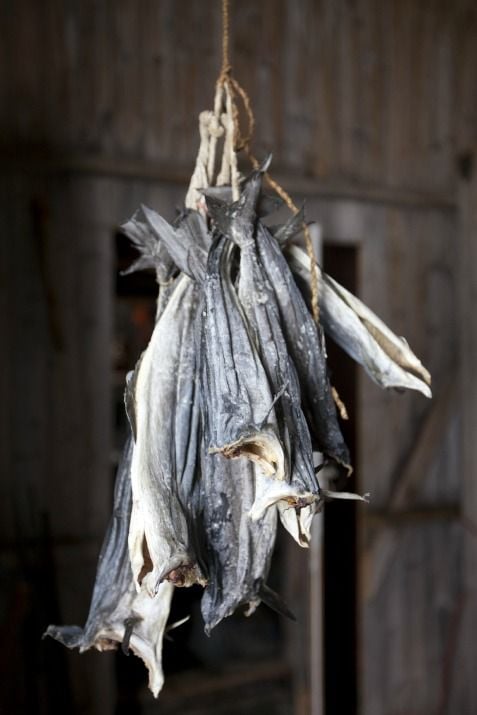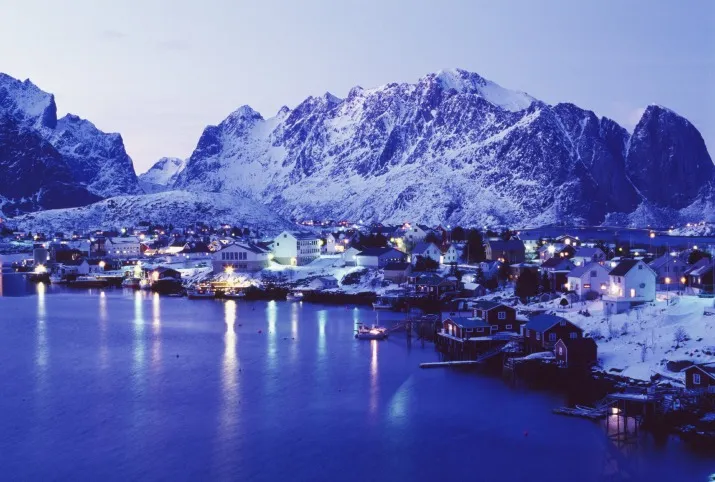The Best Reasons to Go to Norway in February
It may get cold, but the trolls, bobsleds, skiing, Scandinavian delicacies and (heated) art museums make it all worthwhile
/https://tf-cmsv2-smithsonianmag-media.s3.amazonaws.com/filer/norway-february-twilight-631.jpg)
I'm seated in the back of a horse-drawn wagon that's meandering along a path in Nordmarka, the heavily wooded region encompassing much of Oslo. Beside me are a woman from Vancouver, Canada, another from Liverpool, and a Norwegian mother and her young son Aleister, whose round glasses and tousled hair make him look like Harry Potter.
We joke as the wagon lurches forward, our new group of friends pouring sips from a bottle of Jägermeister that had been conveniently hidden behind the trunk of a spruce tree along the route. Though the sky is heavy with moisture, we're content, enchanted by the surrounding forest and already dressed in waterproof wear.
The horse whinnies and our wagon comes to a halt, directly in front of a folding cart table laden with treats. In one corner sits a pile of oranges, while in another are rows of brightly wrapped Lunsji, chocolate-covered wafers (often compared to Kit Kat bars) that are a Norwegian energy staple (the name translates to “quick lunch”). At the center stand more than a dozen cans of Ringnes beer and Pepsi, along with plastic containers of ketchup and mustard, thermoses filled with mulled wine and a coveted bottle of Aquavit, the country's signature spiced spirit.
Our guide Frodo (not kidding) soon appears carrying a backpack filled with hot dogs, buns and dough for roasting on sticks. We head toward the warming fire, taking our seats on benches softened with reindeer pelts. It's the ultimate Norwegian picnic. Then as if on cue, it begins to snow.
“You're going where this February?” friends asked when I mentioned my upcoming trip to greater Oslo, Norway's colorful capital city positioned on the shores of Oslofjord inlet. Known for its wealth of museums and galleries—as well as its steep prices—Oslo also has an unwarranted reputation in the U.S. for being dark and uninviting, specifically in the dead of winter. “You're going to freeze,” people said. “Not only is it cold, but there's hardly any daylight.”
The truth is, I didn't know what to expect when my plane touched down in Norway. I'd been to Scandinavia on a whirlwind tour of Copenhagen, Oslo and Stockholm years before, but that was during the relatively warm month of April and most of my time was spent on tour buses. On this visit, my goal was to experience southern Norway's wondrous bounty any way I saw fit, despite the frigid temperatures.
I arrived at Oslo's Gardermoen Airport on a Monday morning, a dusting of snow covering much of the runway's surrounds. I collected luggage and boarded a Wi-Fi-equipped train for the two-hour train ride to Lillehammer, a small ski hamlet filled with 19th-century wooden structures and—rumor has it—the largest concentration of sporting good stores and outdoor shops in all of Norway. While not as well known as Oslo, Lillehammer skated its way into public consciousness as host of the 1994 Winter Olympics (the games featuring Nancy Kerrigan and Tonya Harding).
Since then, much of the area's added infrastructure has remained intact, attracting tourists who come to watch athletes tackle the Lysgårdsbakkene Ski Jump, browse the displays at the all-encompassing Norwegian Olympic Museum and dine amongst giant trolls at Trollsalen Restaurant in Hunderfossen Winter Park (the eatery claims that the trolls are made of “troll-flesh and troll-bones”). After arriving, I caught a shuttle to nearby Hafjell ski resort for a turn on the bobraft, a slightly tamer and more padded version of bobsledding aimed at tourists.
Joining three (relative) strangers and a driver provided by the resort, I set off at 60 miles per hour down a 16-turn, 5,610-foot-long Olympic bobsledding track, feeling much like a bobblehead doll as I tried to keep my head from falling forward or back. Securing my elbows and arms against the inside of the raft, I worked to keep myself as straight as possible as we hugged each curve. The driver's skills maneuvering around the track amazed me. The experience definitely earned me my next stop: a Fjellbekk cocktail made with vodka, soda and aqauvit at King Valemon's snow and ice-built Ice Bar, inside Hunderfossen's Snow Hotel.
In a country where temperatures can plummet to -40 degrees Fahrenheit in the winter and daylight sometimes never appears, Norwegians have to find innovative ways to amuse themselves during the long winter months. As I quickly learned, it doesn't mean staying indoors. The Norwegian philosophy of Friluftsliv, or “open outdoor living,” is one that permeates Norwegian's lives year-round. Throughout winter you'll see locals dressed in boots and parkas with faux fur-lined hoods wandering the streets of Oslo as if it were sunny and 70 degrees.
Kids may spend their weekdays mornings studying in school, but their evenings are devoted to Vinterpark Tryvann, Oslo's largest ski resort, where they work on perfecting their downhill runs. And in the outskirts of the capital city you'll find people cross-country skiing, ice-fishing, and yes, even picnicking, morning, noon and night.
After leaving Lillehammer I made my way up to Norefjell, another alpine ski resort approximately a 1.5-hour drive north of Oslo. It's home to the ski-in/ski-out Quality Spa & Resort where I booked a room, as well as one of Scandinavia's greatest vertical drops. The slopes were overrun with Danes on winter holiday, visiting their northern neighbor for both its proximity and elevated terrain.
Still, the declaration among locals that Norwegians are “born with skis on their feet” has little to do with downhill (or alpine) skiing, a sport that didn't really gain traction in the area until the 1970s. “Alpine skiing first became popular [with Norwegians] because of the great Swedish champion Ingemar Stenmark, whom they watched on television,” says Jean-Francois Gehin, former marketing manager at Hafjell, as we sit sipping coffee in the resort's cafe. “Then as Norway's standard of living increased—and with the building of ski facilities for the '94 Olympics—alpine skiing has gotten a real push.”
Today, says Gehin, about 15 percent of Norwegians engage in alpine skiing, while approximately 75 percent ski cross-country at least once per year. But despite the sport's mainstream infancy in Norway, the country's alpine skiers remain some of the world's best. Norway's alpine skiers won four medals at the 2010 Winter Olympics in Vancouver, with the ski team's rock-star athlete Aksel Lund Svindal even beating out U.S. favorite Bode Miller for gold in the Men's Super-G.
Norefjell's beginner runs were ideal for my novice skills, and I spent much of the day on the bunny slope (they also call it this in Norway) just outside the resort, using pull lifts to carry me to the top of the hill and then slowly snow plowing down as toddlers whizzed past me, raising their arms in victory as they went. Maybe it was that I was sporting multiple layers or thinking about the promise of an evening shot of aquavit to warm my throat, but I hardly noticed the cold.
In fact, the energy required to partake in friluftsliv during frigid months leads to one of the season's added bonuses: Norway's nurturing, hearty cuisine. That afternoon as I sat enjoying a bowl of Jerusalem artichoke and potato soup at the resort's Swiss-chalet-style Norefjellhytta Restaurant, which overlooks stunning Lake Noresund, I found myself thinking: winter may indeed be the best time to visit southern Norway.
Still, it wasn't until arriving in Oslo that I sampled one of the country's finest food offerings: torsketunger, or fried cod's tongue, an oyster-like delicacy that's only available during skrei season—roughly January through March. Though actually a small muscle from inside the fish's throat, these “tongues” were larger than I expected and surprisingly pleasing, their crispy breaded exteriors contrasting well with the briny, gelatinous substance inside.
I spent my final few days in Norway exploring its capital city, dining on open-faced sandwiches and slurping up bowls of milky fiskesuppe, or fish soup; perusing exhibits inside the Nobel Peace Center and the National Gallery (home to one of the two painted versions of Edvard Munch's The Scream) and spending even more time outdoors. I walked among Gustav Vigeland's snow-draped human sculptures in Oslo's Vigelandsparken as locals glided by on skis; took a death-defying toboggan ride down Korketrekkeren, a corkscrewing and tenacious track riddled with moguls and serviced by public transport that will carry intrepid souls right back up to the top; and sat around a mid-afternoon campfire beneath snow flurries in the woods, drinking mulled wine, frying hot dogs on sticks, and feeling as content as I'd been if it were bright skies and 80 degrees.
There's no doubt that winters in southern Norway are cold, but with centuries of biting temperatures beneath their belts, Norwegians have figured out how to not only cope with the weather, but also how to embrace it. In fact, it's an art they seem to have perfected.



